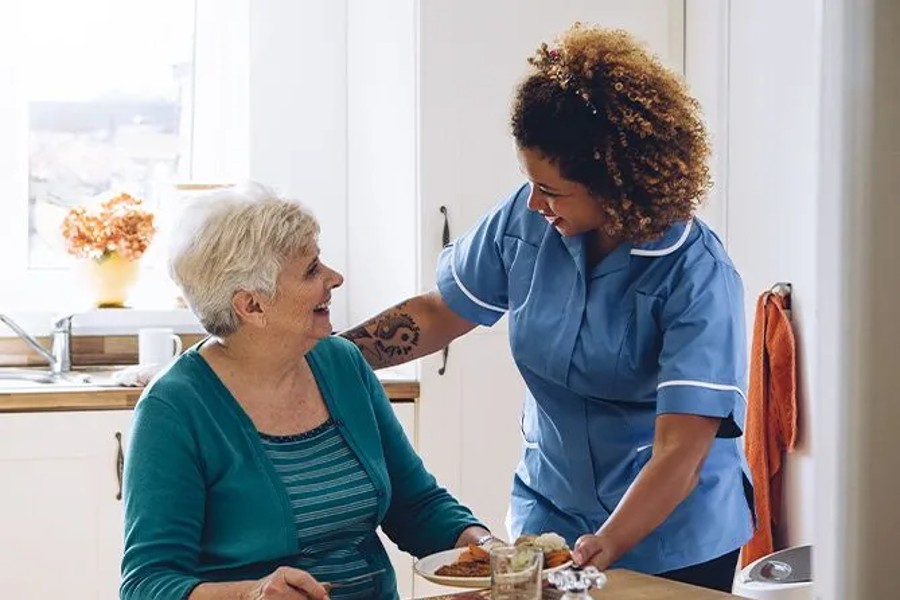 The Health Department today released its latest Childhood Blood Lead Level Surveillance Quarterly Report (PDF) covering the first quarter of 2020, from January to March 2020. The number of children with elevated blood lead levels continues to decline, with a 15% decline from this time last year. The number of children with elevated blood lead levels in the first quarter of the year has fallen 54% since 2014.
The Health Department today released its latest Childhood Blood Lead Level Surveillance Quarterly Report (PDF) covering the first quarter of 2020, from January to March 2020. The number of children with elevated blood lead levels continues to decline, with a 15% decline from this time last year. The number of children with elevated blood lead levels in the first quarter of the year has fallen 54% since 2014.
“No child should be exposed to lead and all children need to get blood lead level tests at ages 1 and 2 during their routine doctor visits,”
“No child should be exposed to lead and all children need to get blood lead level tests at ages 1 and 2 during their routine doctor visits,” said Health Commissioner Dr. Dave Chokshi. “We investigate whenever a child is identified with an elevated blood lead level and take action to prevent exposure. It all starts with testing, and we urge parents to get their children tested at ages 1 and 2 – it’s still crucial during the COVID-19 public health emergency. Parents should also call 311 if they notice peeling or damaged paint in the home.”
Among children who lived or spent time in NYCHA housing, there was a 16% decline in the number of children with elevated blood lead levels, from 31 cases in the first quarter of 2019 to 26 cases in the first quarter of 2020. Among children in private housing, there was a 15% decline in the number of children with elevated blood lead levels when comparing the first quarter of 2019 to the first quarter of 2020 – from 1,074 children to 916 children.
Among children who lived or spent time in NYCHA housing, there was a 16% decline in the number of children with elevated blood lead levels, from 31 cases in the first quarter of 2019 to 26 cases in the first quarter of 2020. Among children in private housing, there was a 15% decline in the number of children with elevated blood lead levels when comparing the first quarter of 2019 to the first quarter of 2020 – from 1,074 children to 916 children.
The rate of children with elevated blood lead levels associated with private housing was 13.1 per 1,000 children tested and among children who spent time in NYCHA housing, the rate was 5.2 per 1,000 children tested.
Overall, there was an 18% decline in the number of children tested this quarter compared to the first quarter of 2019. As the transmission of COVID-19 has decreased in New York City, blood lead level testing has started to rise once again. In June 2020 and July 2020 the number of children tested was 20 percent and 11 percent lower, respectively, than the same time period the prior year. For children under three, the group at highest risk from lead exposure, testing was six and eight percent lower, respectively, than June and July in the prior year.
The COVID-19 public health emergency has led to significant changes in health care utilization – including a drop in blood lead testing among children. Overall, there was an 18% decline in the number of children tested this quarter compared to the first quarter of 2019. As the transmission of COVID-19 has decreased in New York City, blood lead level testing has started to rise once again. In June 2020 and July 2020 the number of children tested was 20 percent and 11 percent lower, respectively, than the same time period the prior year. For children under three, the group at highest risk from lead exposure, testing was six and eight percent lower, respectively, than June and July in the prior year.
This decline was driven by a decrease in children tested in March 2020, in which there was a 49% decline in testing when compared to March 2019. In January and February 2020, there were 738 children with a blood lead level of 5 mcg/dL or greater, compared to 746 children in January and February 2019. In March of 2020, due to the COVID-19 public health emergency, there were only 204 children with a blood lead level of 5 mcg/dL or greater, compared to 359 children in March 2019.
This decline was driven by a decrease in children tested in March 2020, in which there was a 49% decline in testing when compared to March 2019. In January and February 2020, there were 738 children with a blood lead level of 5 mcg/dL or greater, compared to 746 children in January and February 2019. In March of 2020, due to the COVID-19 public health emergency, there were only 204 children with a blood lead level of 5 mcg/dL or greater, compared to 359 children in March 2019.
To promote the need for blood lead level testing of children during the ongoing COVID-19 public health emergency, the Health Department has issued guidance to health care providers promoting the need for testing at routine medical appointments and has sent mailings to families who had a child that missed their one- or two-year-old test urging them to make an appointment. Additionally, Health Department nurses continue to monitor NYC’s childhood blood lead registry every day and make calls to families and health care providers of children who have a blood lead level of 5 mcg/dL or greater to remind them to set up and keep appointments for follow up testing.
Launched in August 2018, this quarterly report is an initiative of the Health Department and complements the City’s annual blood lead level surveillance report (PDF). In July 2018, the City announced more stringent measures to reduce childhood lead exposure and became one of the first jurisdictions in the country to conduct environmental investigations for all children under 18 years old with a blood lead level of 5 mcg/dL or greater. Mayor de Blasio also announced in January 2019 the LeadFreeNYC plan, a comprehensive roadmap to end childhood lead exposure.
The Health Department, through its Healthy Homes and Environmental Exposure Assessment and Education Programs, has developed a comprehensive approach to address elevated blood lead levels in children and adults and to reduce lead hazards in homes and communities. This approach includes follow-up investigations of individuals with elevated blood lead levels, environmental interventions and enforcement activities, education and outreach, surveillance, and research.
New York City also has one of the highest testing rates in the state — 80% of New York City children are tested at least once before their third birthday.
New York City also has one of the highest testing rates in the state — 80% of New York City children are tested at least once before their third birthday. The Health Department collaborates with Medicaid Managed Care Plans to improve testing and issues annual reminders to health care providers.
About LeadFreeNYC
In January 2019, Mayor de Blasio announced the LeadFreeNYC plan. The approach is twofold: prevent exposure to lead hazards in the first place and respond quickly and comprehensively if a child has an elevated blood lead level. To protect New York City kids, the City has increased resources and support for children, parents, and health care providers to make sure every child under 3 is tested for lead exposure – and any child with an elevated blood lead level gets the services they need. The website, LeadFreeNYC, provides information and guidance for parents, tenants, landlords, and all New Yorkers. The website includes data and progress on the City’s lead prevention initiatives and includes educational materials to help New Yorkers understand the dangers of lead and the tools available to anyone who may have been exposed to lead.
Lead poisoning is preventable. Avoid exposure.
- Building owners are required to safely fix peeling paint. Report peeling or damaged paint to your building owner. If they do not fix it, or work is done unsafely (e.g. dust is not contained while they work), you can report the problem online or by calling 311.
- Keep children away from peeling paint and renovations.
- Wash floors and windowsills often. Wash hands and toys of children under age 6.
- Remove shoes before entering your home.
- If someone in your household works in construction, wash work clothes separately from the family laundry.
- Learn more about avoiding products that may contain lead, such as imported pottery, food and cosmetics, and traditional medicines.
Visit nyc.gov/lead.
Get tested.
A blood test is the only way to find out if you or your child has an elevated blood lead level. In New York State, children must be tested for lead poisoning at ages 1 and 2 and screened for risk up to age 6. Ask your doctor about testing older children if you think they may have been exposed to lead. Pregnant people should be assessed for lead exposure at their first prenatal visit.
Call 311 for help finding a doctor or clinic.
Photo credit: Children at Sugar Hill Museum.
Become a Harlem Insider!
By submitting this form, you are consenting to receive marketing emails from: . You can revoke your consent to receive emails at any time by using the SafeUnsubscribe® link, found at the bottom of every email. Emails are serviced by Constant Contact








